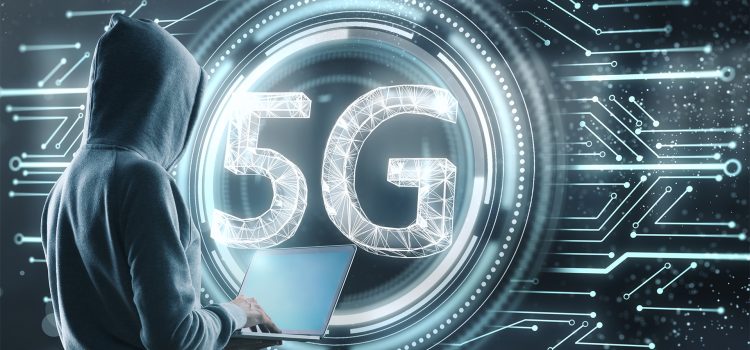
Introduction
The advent of 5G technology is set to revolutionize various industries, with media and entertainment poised to experience some of the most significant transformations. As the fifth generation of mobile networks, 5G promises unprecedented speeds, ultra-low latency, and the capacity to connect a vast number of devices simultaneously. This technological leap forward is not just about faster internet; it’s about enabling new experiences, business models, and ways of consuming content that were previously unimaginable.
Understanding 5G and Its Key Features

Before diving into its impact on media and entertainment, it’s essential to understand what 5G brings to the table:
- Speed: 5G can offer download speeds up to 10 Gbps, which is up to 100 times faster than 4G. This means high-definition movies can be downloaded in seconds.
- Latency: The latency in 5G networks can be as low as 1 millisecond, compared to 30-50 milliseconds in 4G. This near-instantaneous response time is crucial for real-time applications.
- Capacity: 5G can support a million devices per square kilo meter, making it ideal for densely populated areas and large events.
- Reliability: Enhanced reliability ensures consistent performance, which is critical for applications like live streaming and virtual reality.
Transforming Content Creation

The media and entertainment industry thrives on content, and 5G is set to transform how this content is created, distributed, and consumed.
-
Enhanced Live Streaming
With 5G, live streaming will reach new heights. The ultra-low latency and high bandwidth mean that live events, whether sports, concerts, or news broadcasts, can be streamed in ultra-high-definition (UHD) without buffering. This will also enable multiple camera angles and interactive features, providing viewers with a more immersive experience.
-
Virtual Reality (VR) and Augmented Reality (AR)
5G will be a game-changer for VR and AR. The low latency and high speed are essential for these technologies to function smoothly. For example, VR experiences that require real-time interaction will become more feasible, opening up new possibilities for gaming, virtual tours, and live performances. Similarly, AR applications, like interactive advertisements and enhanced sports broadcasts, will become more prevalent.
-
Remote Production
5G will enable more flexible and cost-effective production setups. High-quality video can be transmitted from remote locations to central production facilities in real-time, reducing the need for expensive on-site equipment and personnel. This will be particularly beneficial for news organizations and live event broadcasters.
Revolutionizing Content Distribution

The way content is distributed will also undergo significant changes with the advent of 5G.
-
Mobile Consumption
As mobile networks become faster and more reliable, the consumption of media on mobile devices is expected to surge. 5G will make it easier for users to stream high-definition content on the go, leading to an increase in mobile video consumption. This will drive media companies to prioritize mobile-first content strategies.
-
Edge Computing
5G networks will leverage edge computing to process data closer to the source, reducing latency and improving the quality of service. For media and entertainment, this means faster content delivery and improved experiences for users. For example, streaming services can use edge computing to deliver content with minimal buffering and higher resolution.
-
Personalized Content
With the increased capacity and speed of 5G, media companies can deliver more personalized content to users. Advanced analytics and AI can be used to understand user preferences in real-time and deliver tailored recommendations. This will enhance user engagement and satisfaction.
Enriching User Experiences
The ultimate beneficiaries of 5G in media and entertainment are the users. The technology will enable new and enriched experiences that were not possible before.
-
Interactive and Immersive Experiences
5G will facilitate more interactive and immersive experiences. For instance, in sports broadcasting, viewers could choose their camera angles, access real-time statistics, and even engage in virtual reality experiences that make them feel like they are in the stadium. Similarly, in concerts, fans could enjoy 360-degree views and interact with performers in real-time.
-
Social Media Integration
Social media platforms will leverage 5G to enhance user experiences. High-quality live streaming, real-time interactions, and augmented reality filters will become more common, making social media more engaging and immersive.
-
Gaming
The gaming industry will see a significant boost with 5G. Cloud gaming, where games are streamed from servers rather than downloaded, will become more viable. This will reduce the need for expensive gaming hardware and make high-quality gaming accessible to a broader audience. Moreover, multiplayer online games will benefit from reduced latency, providing smoother and more responsive gameplay.
New Business Models and Opportunities

The impact of 5G on media and entertainment will extend beyond technology and user experiences; it will also create new business models and opportunities.
-
Subscription Services
With the increased consumption of high-quality content, subscription services are likely to grow. Media companies can offer premium content, such as UHD streaming and exclusive live events, as part of subscription packages. Additionally, 5G will enable new types of subscription services, such as VR experiences and interactive content.
-
Advertising
The advertising landscape will also evolve with 5G. Advertisers can leverage AR and VR to create more engaging and interactive ads. Furthermore, the ability to deliver personalized content will allow for more targeted advertising, increasing its effectiveness.
-
Partnerships and Collaborations
The deployment of 5G will encourage partnerships and collaborations between telecom companies, media organizations, and technology providers. These collaborations will drive innovation and the development of new services and applications.
Challenges and Considerations

While the potential of 5G in media and entertainment is immense, there are challenges and considerations that need to be addressed.
-
Infrastructure and Investment
The rollout of 5G requires significant investment in infrastructure. Telecom companies need to upgrade their networks, and media organizations may need to invest in new technologies and equipment to leverage 5G fully. This could be a barrier for smaller companies with limited resources.
-
Privacy and Security
With the increased connectivity and data transfer, privacy and security concerns will become more prominent. Media companies must ensure that user data is protected and comply with regulations to maintain user trust.
-
Content Quality and Standards
As 5G enables higher-quality content, there will be a need for new standards and guidelines to ensure consistency and compatibility. This includes standards for UHD streaming, VR and AR content, and interactive experiences.
Conclusion
The impact of 5G on media and entertainment is set to be transformative. From enhanced live streaming and immersive VR experiences to personalized content and new business models, 5G will revolutionize how content is created, distributed, and consumed. While there are challenges to overcome, the opportunities for innovation and growth are immense. As 5G continues to roll out globally, the media and entertainment industry must embrace this technology to stay competitive and meet the evolving demands of users.










